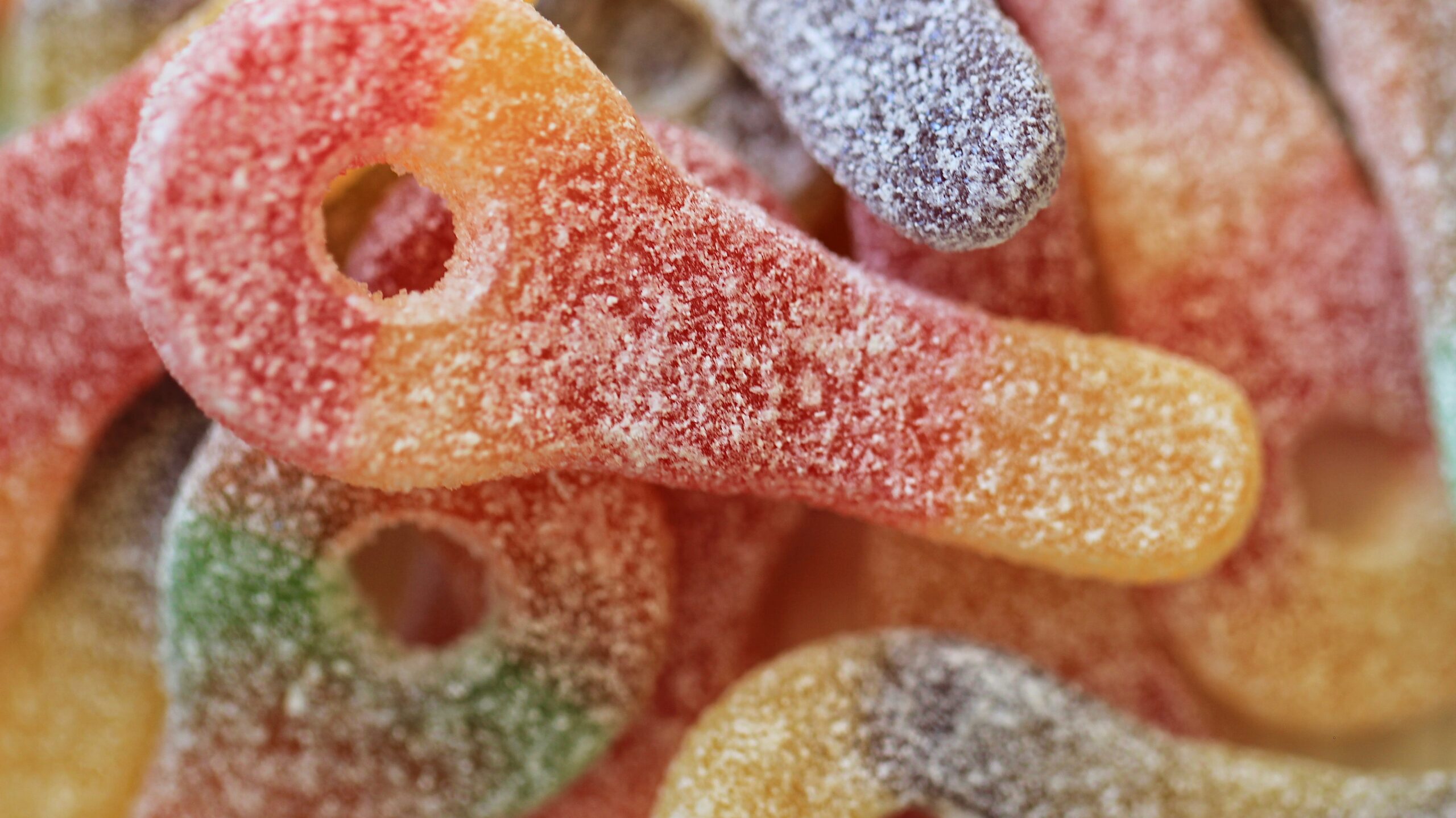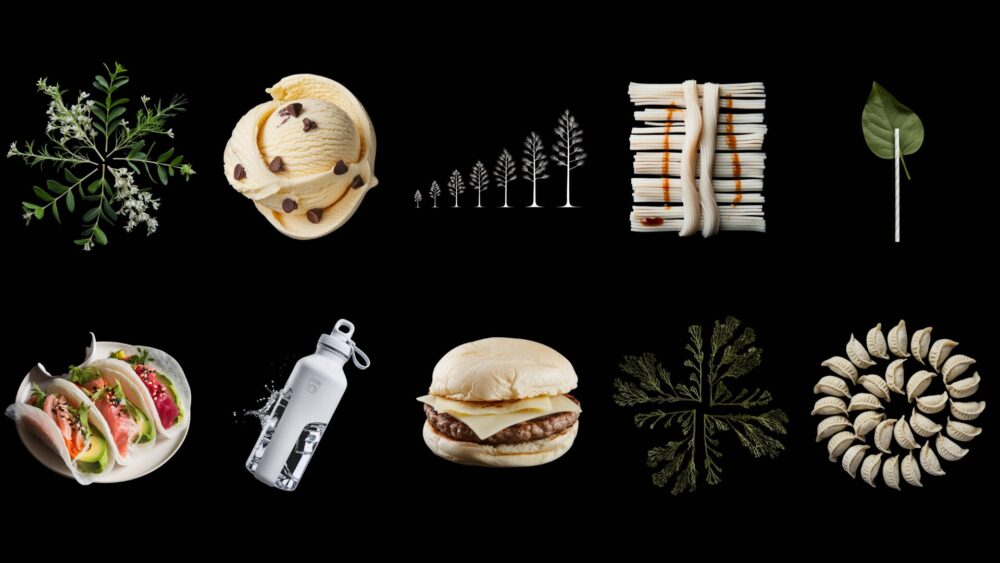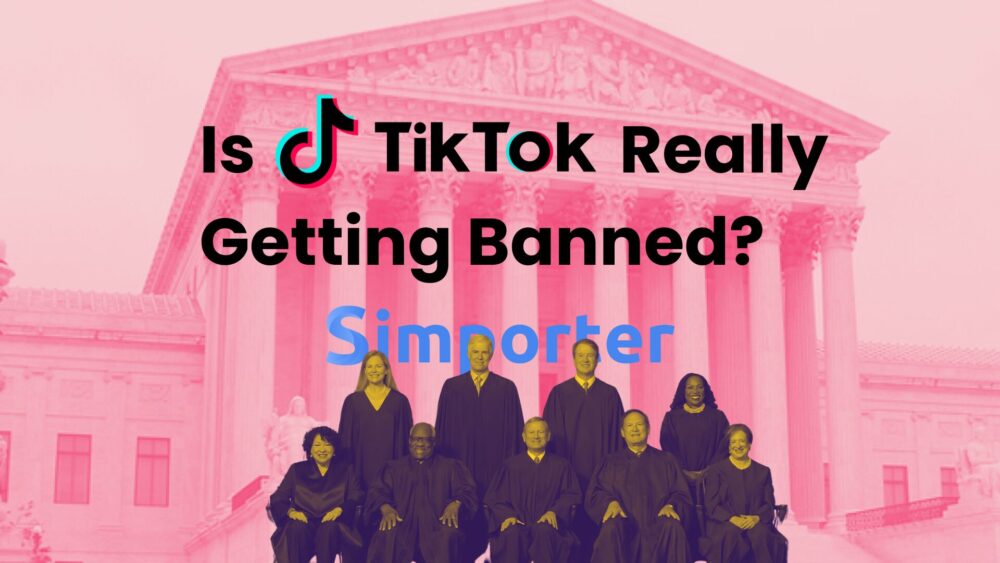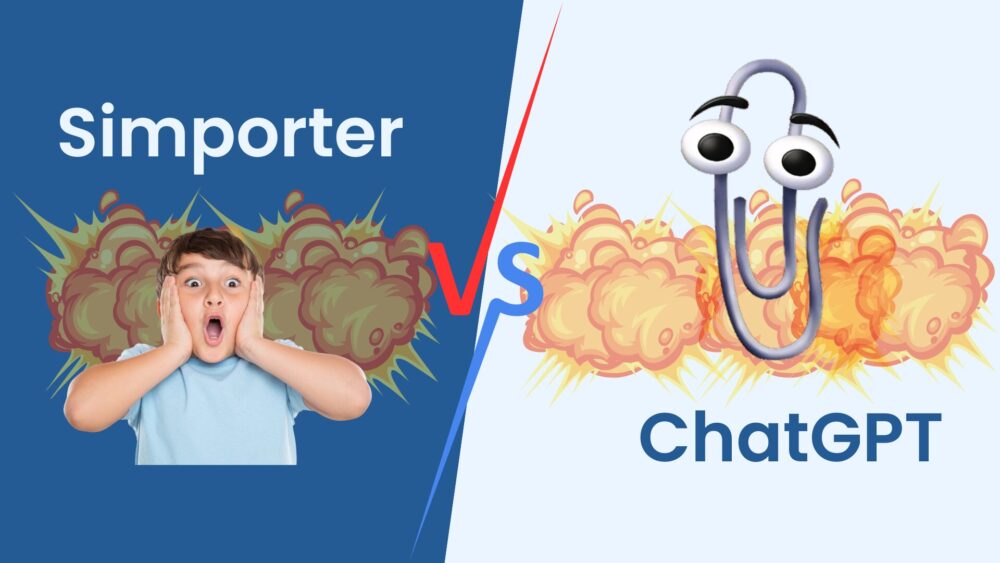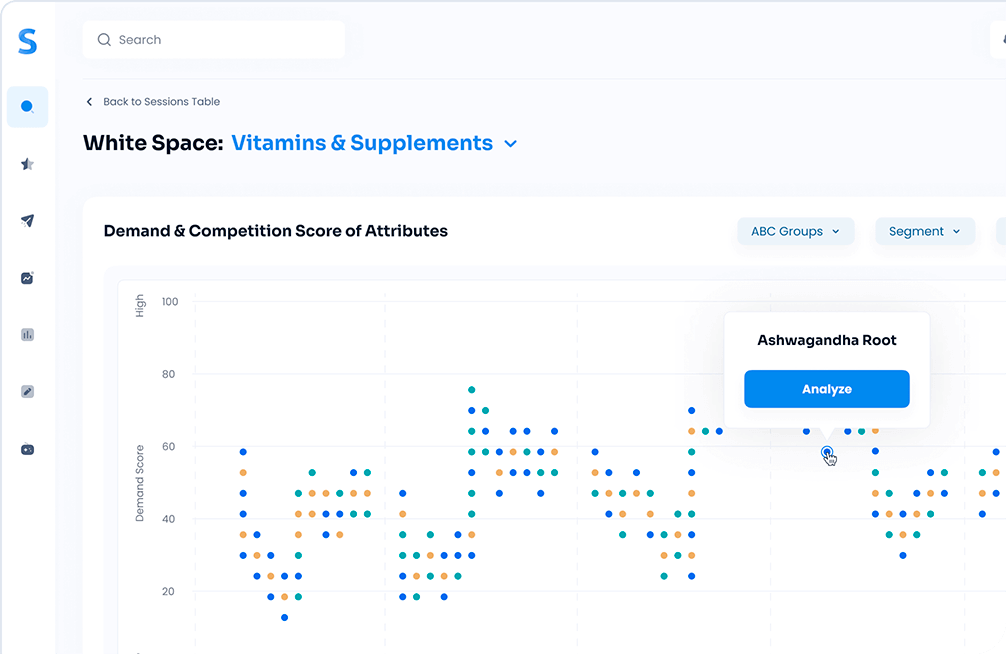When you think about candy if the first thing that comes to mind is a kid going to town on a Halloween haul— we’re here to reframe your viewpoint on the sugary sweets we all love. A recent study found that people eat 52% more candy as adults than when they were kids. This signals to us that adults are the demographic driving most of the hard and soft candy trends we’re seeing today, not the kids knocking on doors hoping for a king-sized snicker.
What exactly are the candy trends that we’re seeing emerge? We consulted our AI White Space tool to find out. Using AI, this tool scans the web, identifying the gaps in the market by filtering data from social media, e-commerce product reviews, and search queries. The software packages its findings in a simple-to-digest dashboard (pictured below) that helps you understand the growing trends in terms of consumer demand and competition.
What did we end up finding? There are five consumer needs that will drive the candy market over the next year. From novelty candy that isn’t exactly “new” (i.e. retro candy) to candy that vegans can indulge in guilt-free, and more. We’re diving into each of the top trends for Hard and Soft Candy:
Retro Candy:

Since the onset of the pandemic, Nostalgia has taken over most markets, and candy is no exception. We can look to TikTok to understand the surging demand for retro candy. The Gen-Z-dominated social media platform has a knack for making products go viral, with people admitting “TikTok Made Me Buy It” and with the #nostoliga reaching over 71 billion views, younger demographics (i.e. Gen Z and Millennials) are looking to recoup their childhood memories with the candy that they would beg their parents for at the store.
To tap into this trend, you’ll want to go for the heartstrings of your target market, bringing back the products and flavors that remind them of eras gone by. Think Pop-Rocks, Nik-L-Lips, and Big League Chew.
Easy Sharing:
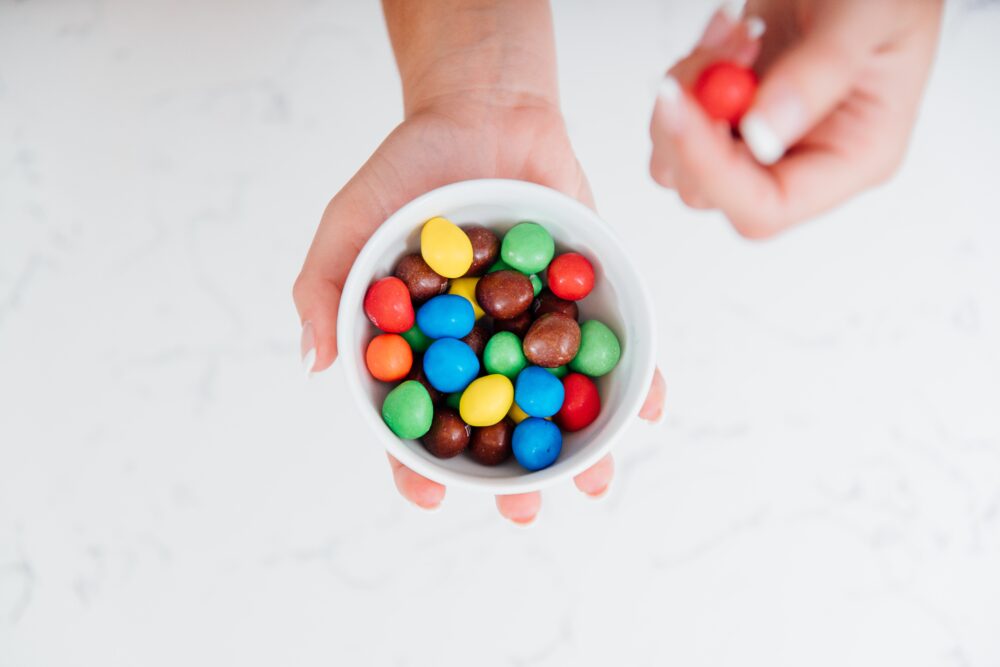
Easy-sharing packaging is in high demand. We’re already seeing this take hold in the market with fan favorites like Ghirardelli’s new individually packaged sharable squares that urge their customers to share directly on the packaging. The key to nailing this trend is the individually packed bite-sized pieces. This makes it easy, and hygienic to share with anyone at any time.
Sharable packaging also means that the package is resealable. This allows people to enjoy their treats in moderation— this is an important feature for health-conscious consumers who want to enjoy a little sweetness without feeling pressure to finish the entire package.
Vegan Friendly:
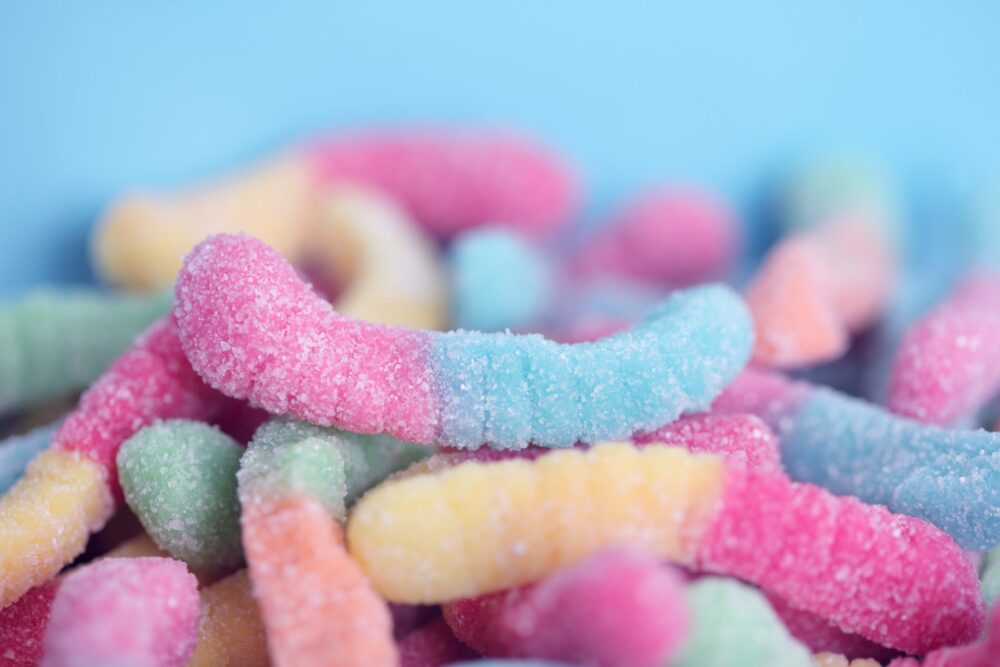
Veganism is on the rise, today 6% of the US population claims to be vegan, which is a 500% rate increase from 2014. While the perception is that vegans only eat healthy, whole-foods, plant-based eaters also want to have their sweet-tooth cravings fulfilled.
We’re seeing an increase in demand for soft and hard candies that are animal free. Traditionally, the ingredients gelatin, honey, beeswax, eggs, and carmine are found in candy. All of these are animal derived, making the candy non-vegan. We’re seeing early adopters hitting the market with products like vegan chocolate caramels and a vegan dupe on a Twix Bar. The key to nailing this trend is to make it clear on the packaging that it’s vegan-friendly. Being able to have peace of mind will have herbivores tossing the sweets into their carts.
Allergy-Friendly:
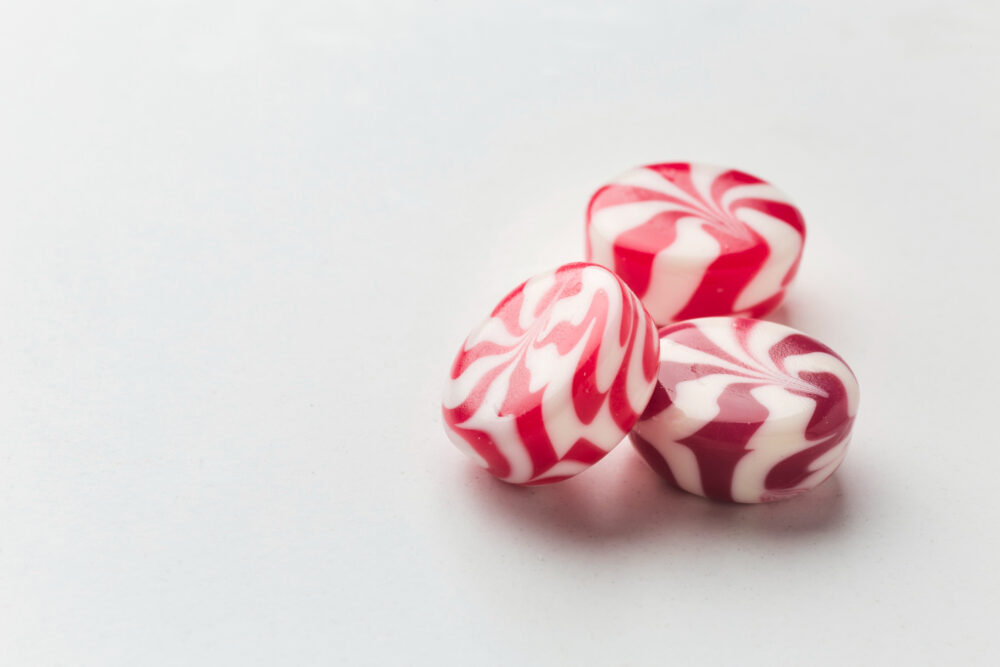
Allergy-friendly foods are on the rise and candy is following suit. This can be attributed to the increased interest in health-conscious eating in the US. Health-conscious consumers are starting to pay closer attention to how their body responds to certain ingredients, which has led to a rise in consumers who have deemed themselves intolerant to things like gluten and dairy.
Candy that is free from the major allergens which are eggs, fish, milk, peanuts, shellfish, soybeans, tree nuts, and wheat/gluten (also known as the big-8) will become increasingly important as more people shy away from these ingredients. Similar to the vegan trend, making sure it’s clearly stated on the packaging will help drive customers to purchase. Awake Chocolates does a great job of this with their gluten free labels on the top of each pouch.
High-Quality: Artisanal

Artisanal high-quality versions of our favorite “grocery store” candy (i.e. Twix, Snickers, Reese’s Peanut Butter Cups, etc.) are going to take the hard and soft candy market by storm. As people become more conscious of the ingredients in the products they’re eating, they’re opting for higher-quality candy.
They want to feel good about even their naughtiest indulgences, and they’re doing so by making sure that they’re purchasing the best quality they can. This trend has mass market appeal with viral media platforms like Refinery 29 testing out brand-name candy vs. their fancy counterparts for their readers.
Summary
All in all, the candy market is changing to be more inclusive of the emerging health and dietary restrictions developing in the consumer market. Along with bringing in lifestyle changes, candy is now a way to connect with people, both by sharing and on an emotional level by bringing in a dose of nostalgia for simpler times.
If you’re ready to future-proof your candy assortment, or confectionary brand, deep dive into the 5 consumer needs with us here. Curious about the full capabilities of Simporter AI? Request a demo on our website. Predicting trends and identifying gaps in the market is just the tip of what Simporter can do for your brand. To learn more, head to Simporter.com and discover how we can help your brand grow.
